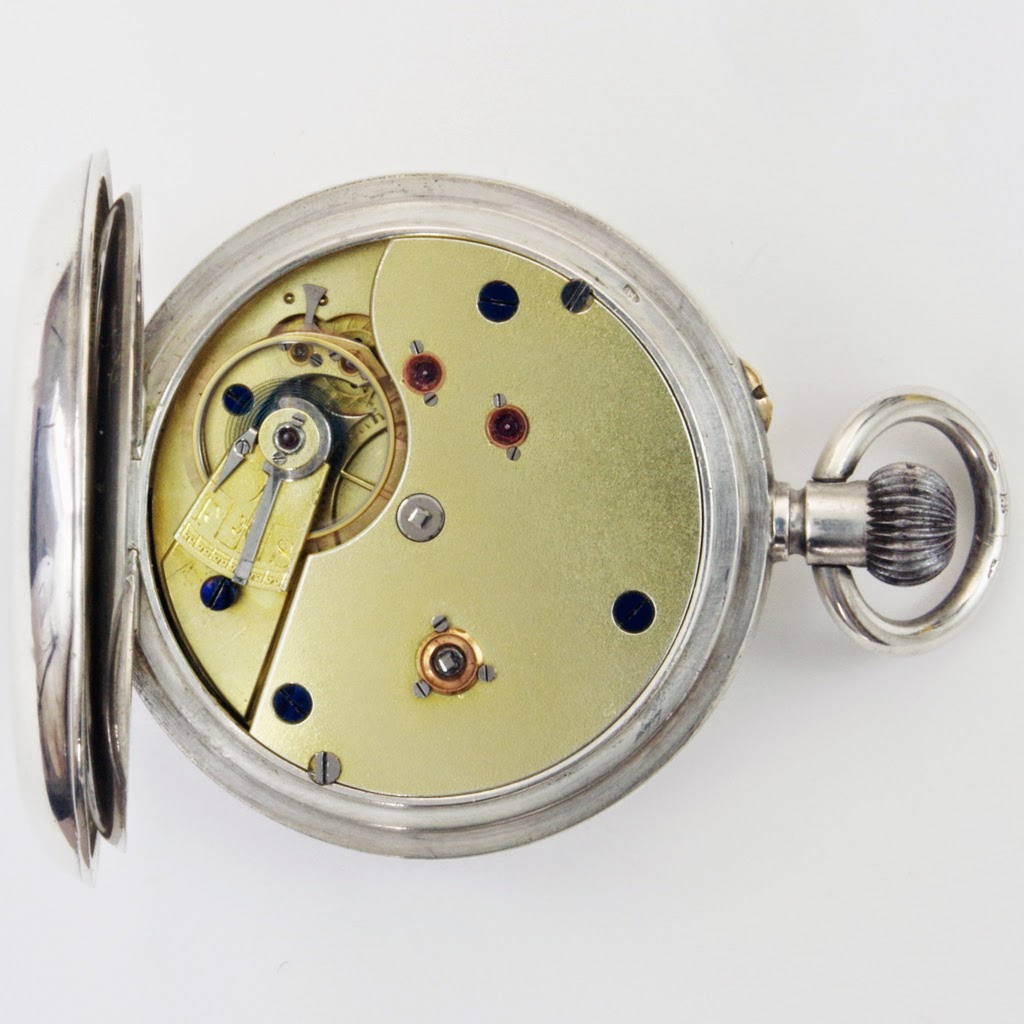Revised and extended December 2016 from the original post August 2015
Dating watches can be a problem but here are a few ways that it is done.
American Watches
 |
A Waltham 1892-Vanguard dated
to 1902 by the serial number, but
probably re-cased (see below). |
These are generally the easiest as for many makes, such as Waltham and Hamilton, production records are still extant and enthusiasts in the US have put a huge amount of effort into putting them into online databases so by taking the serial number of the movement (not the case number!) and entering it you can get the production date usually to within a year or possibly two but sometimes to within a month.
Details of the type of watch may also be provided although there are some errors largely due to mixed production runs (e.g. lever and pendant set, etc..) and the occasional transcription error. The original Waltham database is maintained by the
NAWCC but the most comprehensive site I have found is
The Pocket Watch database.
Swiss Watches
Are more problematic, of the makes I regularly deal with, Omega have published the dates that each million watches were produced so by interpellation the production date can be determined within a year or two. Dates are known for Zenith and some for Longines, & Baume.
 |
A Cyma movement with the serial
number under the dial |
For most of the other makes the data is not generally available or, as is the case with Revue Thomman, the movements do not carry a meaningful serial number, just a 2 or 3 digit number to identify watches within a batch of production.
Having had a lot of watches by Cyma and Tavannes I have been able to build up a good database of serial numbers vs date for production between c1930 and 1938 using the silver hallmarks (see below) which is now good enough to identify the date to within a year.
See this post for details.
Beyond this is comes down to experience and identifying key features such as machine set jewels which determines the earliest possible date.
English Watches.
 |
An LWC movement showing the
serial number under the dial
dated to 1897. |
Are very difficult, as far as I know production records are only available for the Lancashire Watch Company and those that are not accessible.
Other makes (assuming you can identify the maker!) are difficult as several companies appear to have multiple number sequences, indeed occasionally an Errington will turn up with two serial numbers one from each major sequence.
Generally it is therefore necessary to reply on silver case hallmarks or when in a filled or rolled gold case to compare with previous dated examples which may not be as reliable.
Silver Cases.
 |
Silver hallmarks for 1903 by the
Birmingham Assay. The movement
is a Waltham 1899-620 also 1903. |
English silver and gold case hallmarks are unique in having a date year, although until 1974 this is not quite in line with the calendar year and varied by Assay house with the Birmingham "year" starting in July and the London "year" in May, normally I refer to just the starting year, so Birmingham 1908 would indicate that the case was assayed between July 1908 and June 1909.
Some Swiss watches have only the Swiss hallmarks but others have English import marks.
For older English watches this is generally a reliable method of dating but with the introduction of the
standard watch case we start to have problems due to recent re-casing of orphaned movements into orphaned cases, a problem which appears to be getting worse judging from what I see on eBay.
A subsequent post here will look at how to identify re-cased watches. See also
J.W. Benson movements in Dennison cases.
 The conservative English trade were, as usual, quite a way behind probably not helped by the investment required in redesigning their watches to change the gearing in the train and retooling costs which would have been more significant for the much smaller English companies than for the large American operations.
The conservative English trade were, as usual, quite a way behind probably not helped by the investment required in redesigning their watches to change the gearing in the train and retooling costs which would have been more significant for the much smaller English companies than for the large American operations.  Generally it was the early 1890's before the Coventry and Lancashire trades started to use the faster train, led not unnaturally by newly introduced keyless three-quarter plate designs with some of the older full plate designs being allowed to die a natural death, particular Fusee movements, and others being changed mid life or when Swiss Lever escapements started to replace the English Lever.
Generally it was the early 1890's before the Coventry and Lancashire trades started to use the faster train, led not unnaturally by newly introduced keyless three-quarter plate designs with some of the older full plate designs being allowed to die a natural death, particular Fusee movements, and others being changed mid life or when Swiss Lever escapements started to replace the English Lever.





























.JPG)





.JPG)

.JPG)